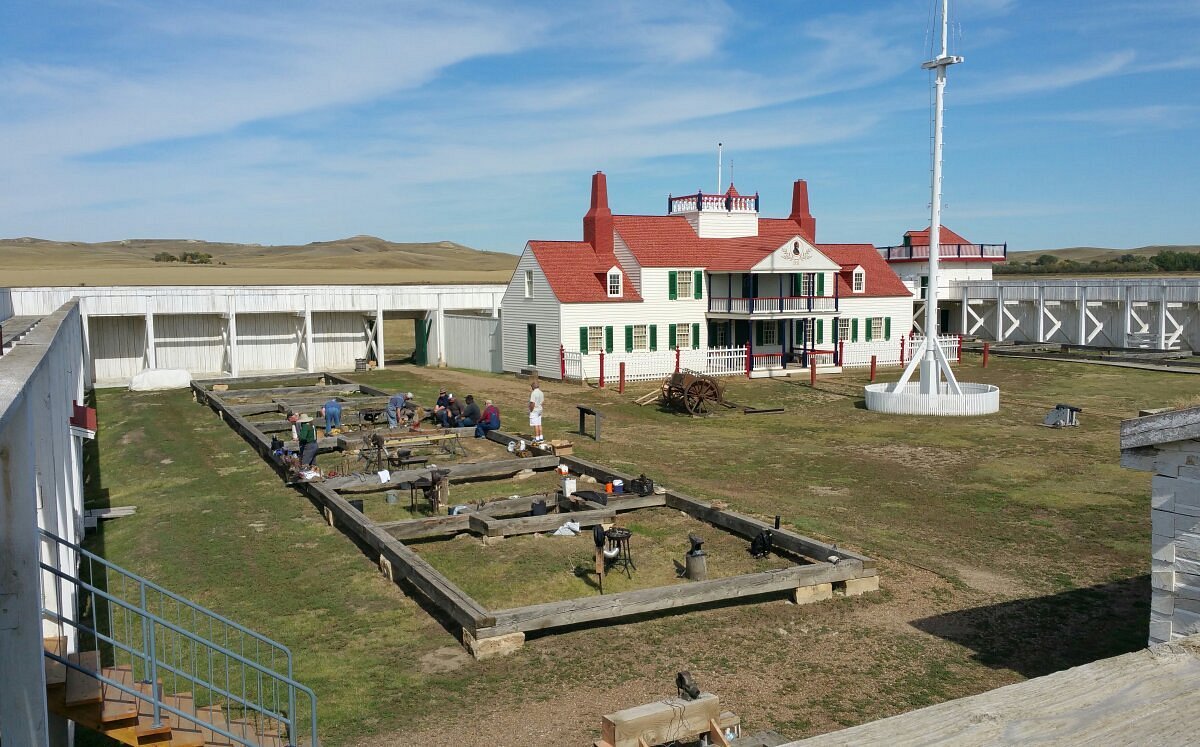Hidden Trading Posts Of The Missouri Fur Trade

Ever wondered about the hidden trading posts of the Missouri Fur Trade? These spots played a crucial role in shaping early American history. Trappers, traders, and Native American tribes gathered here, exchanging goods and stories. Imagine the bustling activity as furs, beads, and tools changed hands. Many of these posts remain unknown to most people, tucked away in remote areas. Visiting these sites offers a glimpse into a bygone era. You can almost hear the echoes of bartering and the clinking of trade goods. Ready to uncover these hidden gems? Let's dive into the fascinating world of the Missouri Fur Trade.
Hidden Trading Posts of the Missouri Fur Trade
The Missouri River played a crucial role in the fur trade during the 18th and 19th centuries. Traders and trappers established numerous posts along its banks, many of which remain hidden gems today. Let's explore some of these fascinating locations.
Historic Trading Posts Along the Missouri River
These trading posts were bustling hubs of activity, where traders exchanged goods with Native American tribes and European settlers. Each post has its unique story and charm.
1. Fort Osage
Fort Osage, established in 1808, served as a key trading post and military outpost. Located near present-day Sibley, Missouri, it was one of the first U.S. government outposts in the Louisiana Purchase territory. The fort provided a safe place for traders and Native Americans to conduct business.
2. Fort Pierre Chouteau
Fort Pierre Chouteau, built in 1832, became one of the most important trading posts on the upper Missouri River. Situated in present-day South Dakota, it was named after Pierre Chouteau Jr., a prominent fur trader. The fort facilitated trade with the Lakota Sioux and other tribes.
3. Fort Union Trading Post
Fort Union, established in 1828, was a major fur trading post located near the confluence of the Missouri and Yellowstone Rivers. It served as a vital link between the American Fur Company and various Native American tribes. Today, it stands as a National Historic Site, offering a glimpse into the past.
4. Fort Benton
Fort Benton, founded in 1846, became the last fur trading post on the upper Missouri River. Located in present-day Montana, it played a significant role in the fur trade and later in the gold rush era. The fort's strategic location made it a bustling center of commerce.
Lesser-Known Trading Posts Worth Visiting
While some trading posts gained fame, others remained relatively obscure. These lesser-known sites offer a quieter, more intimate look at the fur trade era.
5. Fort Lisa
Fort Lisa, established in 1812 by Manuel Lisa, was one of the earliest trading posts on the Missouri River. Located near present-day Omaha, Nebraska, it served as a base for Lisa's fur trading operations. The fort's strategic location helped facilitate trade with various Native American tribes.
6. Fort Clark
Fort Clark, built in 1830, was a significant trading post located in present-day North Dakota. It served as a hub for trade with the Mandan, Hidatsa, and Arikara tribes. The fort's location along the Missouri River made it an essential stop for traders and trappers.
7. Fort Atkinson
Fort Atkinson, established in 1819, was the first U.S. Army post west of the Missouri River. Located near present-day Fort Calhoun, Nebraska, it played a crucial role in protecting traders and settlers. The fort also served as a trading post, facilitating commerce with Native American tribes.
8. Fort Berthold
Fort Berthold, founded in 1845, was a key trading post located in present-day North Dakota. It served as a center for trade with the Mandan, Hidatsa, and Arikara tribes. The fort's strategic location along the Missouri River made it an important hub for fur traders.
Rediscovering the Past
Exploring these hidden trading posts offers a unique opportunity to step back in time and experience the rich history of the Missouri fur trade. Each site provides a glimpse into the lives of traders, trappers, and Native American tribes who played a vital role in shaping the region.
9. Fort Manuel
Fort Manuel, established in 1812 by Manuel Lisa, was located near present-day Kenel, South Dakota. It served as a trading post and wintering ground for fur traders. The fort's remote location made it a challenging but rewarding destination for those seeking to trade with Native American tribes.
10. Fort Lookout
Fort Lookout, built in 1822, was a lesser-known trading post located near present-day Chamberlain, South Dakota. It served as a base for fur traders and a meeting point for various Native American tribes. The fort's strategic location along the Missouri River made it an essential stop for traders.
The Legacy of Missouri's Fur Trade
Missouri's fur trade history is rich with hidden trading posts that played crucial roles in shaping the region. These posts were more than just places of commerce; they were hubs of cultural exchange and survival. Exploring these sites today offers a glimpse into the lives of traders, Native Americans, and settlers who navigated this rugged frontier.
Visiting these historic locations provides a deeper understanding of the challenges and triumphs faced by those who lived during this era. From the bustling activity at Fort Osage to the strategic importance of Fort Belle Fontaine, each site tells a unique story.
Whether you're a history buff or just curious about the past, the hidden trading posts of Missouri's fur trade offer a fascinating journey through time. Discovering these sites can enrich your appreciation for the state's diverse and storied heritage.

